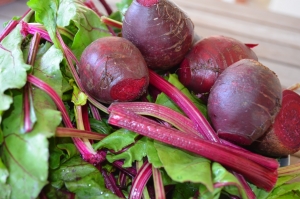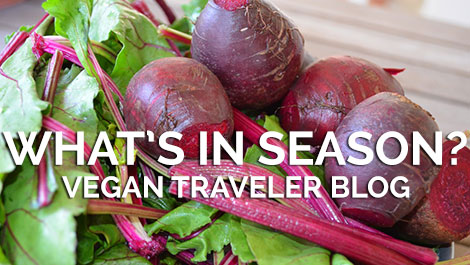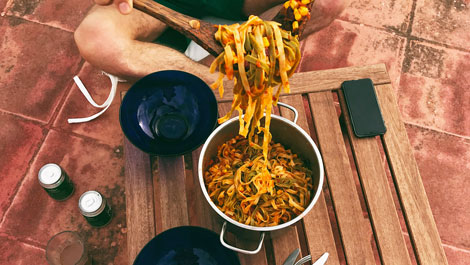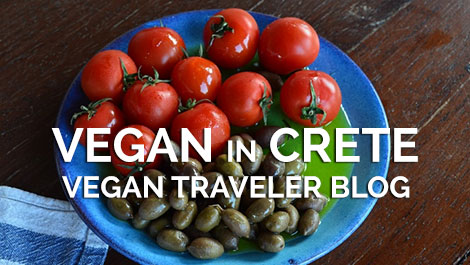It is spring in Greece and the season calls for recipes that include lots of greens and herbs. Beetroots, lettuces, spinach, spring onion and leeks, spearmint, dill and wild fennel, radishes, broccoli and lots of endemic greens.
Beetroots in April and May are on their sweetest form so you can end up with some wonderful dishes and sweet and sour sala
 Beetroots are an ancient, prehistoric food that grew naturally along the coastlines in North Africa, Asia, and Europe. Originally, it was the beet greens that were consumed; the sweet red beetroot that most people think off, as a “beet” today wasn’t cultivated until the Roman times.
Beetroots are an ancient, prehistoric food that grew naturally along the coastlines in North Africa, Asia, and Europe. Originally, it was the beet greens that were consumed; the sweet red beetroot that most people think off, as a “beet” today wasn’t cultivated until the Roman times.
Beets contain a variety of unique health-boosting nutrients that you may not be getting elsewhere…plus, they’re delicious! They are high in vitamin C, fibre and essential minerals like potassium (nerve and muscle function) and manganese (bones, liver, kidneys and pancreas). The leafy part besides containing protein, phosphorus, zinc, fibre, vitamin B6, magnesium, potassium, copper, and manganese, also supply significant amounts of vitamin A, vitamin C, calcium, iron and folate.
The simplest way to prepare and serve beets is to boil and drizzle with olive oil and vinegar. Some chopped garlic on top will do wonders.
Tip: The bulbs need the longer cooking time, then come the stems and finally the green leafy parts will cook the fastest. So separate in three parts and add each part in boiling water progressively, remove each when softened (the green parts will require the least cooking time and the bulbs the longer).
Here we will serve beet roots, the stems and the leafs with a garlic sauce and some carob rusks, of course all drizzled with olive oil and some good quality vinegar.
Beets with this garlicky potato paste are a favourite comfort food in Greece, if you are lucky you may be able to order this in a local taverna or a traditional restaurant but it is usually prepared at home. It’s easy enough to make and if you are not bothered by the garlic, it is a good and healthy option for when you are having guests over for dinner.
Roasted beetroot with a garlic dip and carob rusks
Ingredients (serves 4)
- 4 – 5 Beetroots
- 3 boiled potatoes
- 1 clove of garlic

- Carob rusks (8 pieces) – Alternatively may use rye rusks or any type of rusk you can find
- Extra virgin olive oil (2-3 tablespoons)
- Apple cider vinegar
- Salt and pepper
Preparation
Roast the Beetroots
There is no need to peel off the skin before cooking the beetroots. Just wash the r oots well and place in a roasting pan wrapped in aluminum foil. Once the beets are cooked and have cooled off, the skin will come off easily enough. Remove a small bit from the top and the bottom of each beetroot with a knife and cut each bulb in four pieces. Sprinkle with a generous amount of extra virgin olive oil, salt and pepper. Set aside and let the bulbs soak up the aromas of the oil. You may also sprinkle with a bit of apple cider vinegar.
oots well and place in a roasting pan wrapped in aluminum foil. Once the beets are cooked and have cooled off, the skin will come off easily enough. Remove a small bit from the top and the bottom of each beetroot with a knife and cut each bulb in four pieces. Sprinkle with a generous amount of extra virgin olive oil, salt and pepper. Set aside and let the bulbs soak up the aromas of the oil. You may also sprinkle with a bit of apple cider vinegar.
Make the potato – garlic paste
Once the potatoes are boiled and have somehow cooled down, mix in a food processor half a potato with two generous tablespoons of olive oil and the garlic. Once this first paste has formed add the rest of the potatoes and blend well, in the low power mark. You may use some extra olive oil while blending! Extra olive oil is always an option.
Finally, in a large salad bowl break the rusks in pieces, mix with the beetroots and add the garlic-potato spread at the top. For extra taste, texture and a bit of protein sprinkle some almonds or walnuts at the top.
What is Carob?
Carob is an evergreen flowering shrub native to the Mediterranean region and belongs to the pea family. The fruit of the carob tree is an edible dark brown pod, rich in sucrose. It has a high nutritional value since it contains protein, carbohydrates, vitamins A and B and minerals. It is used to feed livestock and the pods are also ground into flour that is often used as a substitute of cocoa when making various products such as baked goods, bars, snacks, cereal, and dairy products.
Carob pods have been consumed since ancient times, the Jews used to eat the dried pods while a type of carob drink rich in fibre, protein and antioxidants is still drunk by Muslims during the Islamic month of Ramadan, to avoid dehydration.
Nowadays carob containing products are readily found in health food stores. Carob shrubs are very common here on Crete and many family businesses are now exporting various carob containing products. You may be able to find carob rusks on your local food store which most likely will be of Cretan origin, if not any other type or rusk (rye or wholewheat) would work well.



























Yum–I love beets! 🙂 I especially love them in juice form.
Thanks for the recipe!